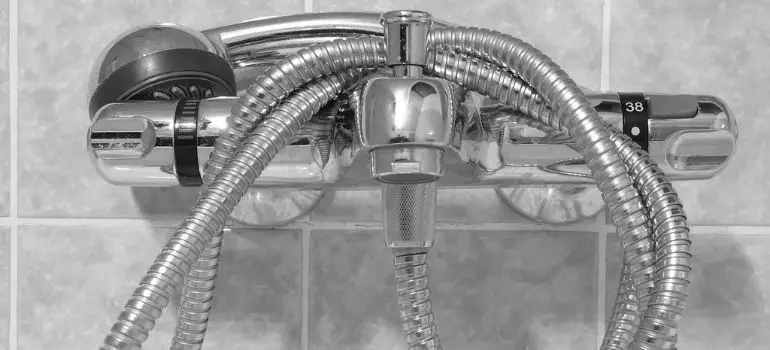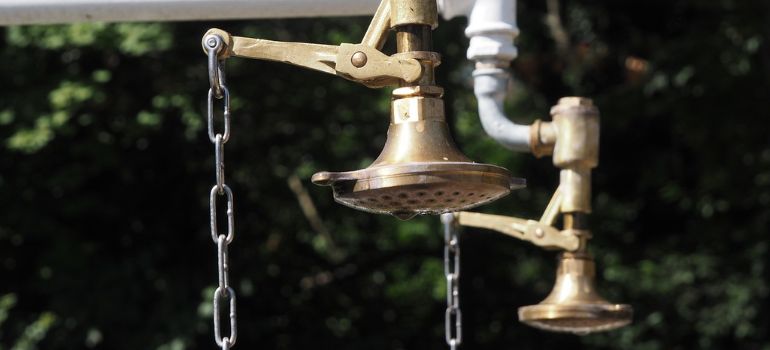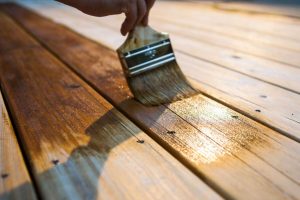Introduction
Installing multiple shower heads can transform your daily shower routine into a spa-like experience. But before you dive into the installation process, it’s essential to understand the steps involved and gather the necessary materials.
Assessing Your Bathroom
Assessing your bathroom is the crucial first step in the journey towards installing multiple shower heads. It involves evaluating various aspects of your bathroom’s layout, plumbing system, and your personal preferences. Here’s a detailed guide on how to go about it:
- Space Availability: Begin by examining the available space in your bathroom. Multiple shower heads require sufficient room for installation without crowding the area. Measure the dimensions of your shower space, including the height, width, and depth.
- Shower Area Shape: Take note of the shape of your shower area. Is it a standard square or rectangular enclosure, or does it have unique angles or corners? Understanding the shape will help you plan the placement of the shower heads effectively.
- Existing Plumbing: Evaluate your bathroom’s existing plumbing system. Identify the location of water supply lines and drains. Determine if your plumbing system can accommodate the additional water flow required for multiple shower heads.
- Water Pressure: Check the water pressure in your bathroom. Insufficient water pressure can affect the performance of multiple shower heads. Ensure that your plumbing system can provide adequate pressure for a satisfying shower experience.
- Drainage: Assess the drainage system in your bathroom. Confirm that it can handle the increased water flow from multiple shower heads without causing drainage issues or flooding.
- Ventilation: Consider the ventilation in your bathroom. Adequate ventilation is essential to prevent moisture buildup and mold growth. If necessary, install exhaust fans to improve ventilation.
- Electrical Considerations: If your shower heads include features like LED lights or electronic controls, ensure there are electrical outlets nearby or plan for their installation.
- Aesthetic Preferences: Think about your aesthetic preferences. Consider how the multiple shower heads will fit into the overall design of your bathroom. Choose shower heads that complement your bathroom’s style.
- Budget: Determine your budget for the project. Installing multiple shower heads can vary in cost, so having a budget in mind will help you make informed decisions about the type and number of shower heads you can install.
- Regulations and Permits: Check local building codes and regulations regarding plumbing installations. You may need permits or approvals from your local authorities for certain modifications.
- Consult a Professional: If you’re unsure about any aspect of the assessment or if your bathroom requires significant modifications, it’s advisable to consult a professional plumber or contractor. They can provide expert guidance and ensure the project is carried out safely and efficiently.
Gathering Tools and Materials
To ensure a smooth and successful installation of multiple shower heads, it’s essential to gather all the required tools and materials beforehand. Here’s a comprehensive list of what you’ll need:
Tools:
- Plumbing Wrenches: You’ll need adjustable plumbing wrenches for tightening and connecting pipes and fittings securely.
- Pipe Cutter: A pipe cutter will help you accurately cut the pipes to the desired length.
- Measuring Tape: A measuring tape is crucial for precise measurements when planning the layout.
- Pipe Thread Tape: Also known as plumber’s tape, this is used to seal threaded connections and prevent leaks.
- Level: A level ensures that your shower heads and pipes are installed perfectly straight and level.
- Screwdriver Set: You may need screwdrivers for various tasks, such as securing mounting brackets.
- Hacksaw: In case you need to make cuts in larger pipes or other materials.
- Caulking Gun: For applying sealant or caulk during waterproofing.
- Electric Drill: If you plan to install accessories or fixtures, an electric drill can be handy for making holes in tiles or walls.
- Safety Gear: Safety glasses, work gloves, and ear protection are essential for your safety during the installation process.
Materials:
- Shower Heads: Select the multiple shower heads that you want to install, including rain shower heads, handheld showerheads, or body sprays, depending on your preferences.
- Pipes: Choose the appropriate pipes (usually copper or PEX) and fittings for your plumbing system. Ensure they are the right size and length for your layout.
- Diverter Valve: A diverter valve allows you to control the flow of water between different shower heads. Make sure it suits your shower configuration.
- Shower Arm and Flange: These components connect the shower head to the plumbing system. They come in various lengths and styles to fit your design.
- Waterproofing Membrane: To waterproof the shower area and prevent water damage, you’ll need a high-quality waterproofing membrane.
- Caulk or Sealant: Choose a waterproof caulk or sealant to seal joints, seams, and any gaps.
- Pipe Straps or Clamps: These secure the pipes and prevent them from shifting or vibrating.
- Teflon Tape: Used to wrap around threads on pipe connections to ensure a watertight seal.
- Accessories: Depending on your preferences, you might want to include additional accessories such as soap dispensers, towel racks, or shelving units.
- Mounting Hardware: If you’re installing any fixtures or accessories, make sure you have the appropriate mounting hardware.
- Shower Tiles or Wall Coverings: If you’re planning to update the aesthetics of your shower area, gather the necessary tiles or wall coverings.
- Electrical Components (if applicable): If your shower heads have LED lights or electronic controls, ensure you have the required electrical components and wiring.
Choosing the Right Shower Heads
Selecting the right shower heads is crucial for a successful installation. Explore options such as rain shower heads, handheld showerheads, or body sprays to create the perfect shower experience.
Preparing Your Plumbing System

Before you embark on the installation of multiple shower heads, it’s crucial to ensure that your plumbing system is ready for the task. Here are the steps to prepare your plumbing system:
- Shut Off the Water Supply: Begin by turning off the main water supply to your house. This step is crucial to prevent any water flow while you work on the plumbing system.
- Drain the Pipes: Open all faucets and fixtures in your bathroom to drain any remaining water from the pipes. This will minimize the mess and prevent water from gushing out when you start making connections.
- Locate Existing Water Lines: Identify the location of your existing water supply lines and drain lines in your bathroom. Understanding their layout will help you plan the placement of the new shower heads.
- Assess Water Pressure: Check the water pressure in your plumbing system. Adequate water pressure is essential for multiple shower heads to function effectively. If your water pressure is low, consider installing a booster pump to increase it.
- Inspect for Leaks: Carefully inspect your plumbing system for any existing leaks or damage. Repair any leaks or issues before proceeding with the installation. Leaks can cause water damage and compromise the performance of your new shower heads.
- Upgrade if Necessary: Depending on the age and condition of your plumbing system, you may need to consider upgrading it. Old and corroded pipes can restrict water flow and affect the performance of your multiple shower heads.
- Check Drainage: Ensure that your drainage system is in good working condition. A clogged or inefficient drain can lead to water pooling in your shower area, creating a mess.
- Install Adequate Supply Lines: Make sure you have sufficient supply lines to accommodate the additional water demand of multiple shower heads. If needed, consult with a professional plumber to assess and upgrade your supply lines.
- Evaluate Ventilation: Proper ventilation is essential to prevent moisture buildup in your bathroom. Ensure that your bathroom has adequate ventilation, such as exhaust fans, to control humidity.
- Plan for Future Maintenance: Consider accessibility for future maintenance and repairs. Ensure that valves, shut-off switches, and access panels are easily reachable in case you need to service your plumbing system or shower heads in the future.
- Consult a Professional: If you’re uncertain about the condition of your plumbing system or if it requires significant modifications, it’s advisable to consult a professional plumber. They can assess your plumbing system’s readiness and make any necessary adjustments.
Creating a Shower Head Layout
Designing the layout for your multiple shower heads is a crucial step in ensuring a balanced and satisfying shower experience. Here’s a guide on how to create an optimal shower head layout:
- Shower Head Placement: Determine where you want to position each shower head. Consider factors like your body’s height, the angles at which water will hit, and how you’d like to distribute water for maximum coverage.
- Main Shower Head (H1): Start with the main or primary shower head (H1). This is typically the largest and central head, often a rain shower head. Place it directly above you, ensuring that the water falls evenly on your body.
- Secondary Heads (H2, H3, etc.): If you’re installing additional heads, plan their positions carefully. These can be handheld showerheads or body sprays. Arrange them to target specific areas, such as your shoulders, lower back, or legs. Make sure they complement the main shower head.
- Spacing: Maintain proper spacing between shower heads to prevent overcrowding. Typically, aim for a distance of at least 12 inches between heads to ensure even water distribution.
- Angles: Position the shower heads at different angles to achieve a well-balanced flow of water. Angling them slightly outward can create a more encompassing shower experience.
- Adjustability: Choose shower heads that offer adjustability in terms of angle and water flow. This allows you to customize the direction and intensity of the water according to your preferences.
- Consider Diverter Valves: If you have a limited water supply, consider installing diverter valves. These valves allow you to control which shower heads are active at any given time. You can use all heads simultaneously or select specific ones.
- Accessibility: Ensure that the shower heads are easily accessible. You should be able to reach and adjust them comfortably while in the shower.
- Balance Water Flow: Keep in mind that the water flow should be balanced between all the shower heads. Test the flow of each head to ensure they provide a similar pressure and temperature.
- Safety: Pay attention to safety considerations, especially if you have multiple shower heads at different heights. Ensure that the heads are securely mounted to prevent any accidental dislodging.
- Personal Preferences: Consider your personal preferences when designing the layout. Some people prefer a combination of rain shower and body sprays for a spa-like experience, while others may opt for handheld showerheads for versatility.
- Aesthetics: The layout should not only be functional but also aesthetically pleasing. Take into account the visual symmetry and harmony of the shower head arrangement within your bathroom’s design.
- Consult a Professional: If you’re unsure about the layout or need assistance with plumbing connections, consult with a professional plumber. They can provide valuable insights and ensure that the layout meets safety and building code requirements.
Connecting the Pipes
Use the appropriate pipes and fittings to connect the shower heads to your existing plumbing. Pay close attention to the connections to prevent leaks.
Installing Valves and Diverters
When you’re installing multiple shower heads, it’s essential to incorporate valves and diverters into your plumbing system. These components allow you to control the flow of water between different shower heads and provide flexibility in your shower experience. Here’s how to install valves and diverters effectively:
- Choose the Right Valves and Diverters: Start by selecting high-quality valves and diverters that are compatible with your plumbing system. Consider whether you want a diverter valve or a three-way valve for more precise control.
- Locate the Ideal Position: Determine where you want to install the valves and diverters. Typically, they are placed within easy reach, such as on the wall of the shower area. Ensure that they are accessible without stretching or bending.
- Shut Off the Water Supply: Turn off the main water supply to your bathroom before beginning any installation work. This is a crucial safety step.
- Measure and Mark: Use a measuring tape and level to measure and mark the positions where you’ll install the valves and diverters. Ensure they are level and properly aligned.
- Cut and Prepare the Pipes: Carefully cut the water supply pipes at the marked locations using a pipe cutter. Make clean and straight cuts to ensure a secure fit. Use a deburring tool to remove any sharp edges.
- Install the Valves: Attach the valves and diverters to the cut pipes. Use appropriate fittings and adapters if needed. Make sure they are tightly secured using plumbing wrenches.
- Connect the Shower Heads: Connect the shower heads and any additional fixtures to the valves and diverters. Ensure that each head is properly sealed with Teflon tape or plumber’s tape to prevent leaks.
- Test for Leaks: Turn on the main water supply and test the system for any leaks. Check the connections, valves, and diverters for any signs of water seepage. If you detect leaks, tighten the connections further.
- Adjust the Diverters: If you have a three-way diverter, adjust it to control the flow between the different shower heads. Most diverters have clear labels or markings to indicate which head is active.
- Test the Functionality: Turn on the shower and test the functionality of the valves and diverters. Ensure that you can switch between shower heads smoothly and that the water pressure is balanced.
- Seal and Secure: Once you’re satisfied with the performance, seal around the valves and diverters with waterproof caulk or sealant. This step ensures that water doesn’t seep into the wall, preventing potential damage.
- Final Inspection: Conduct a final inspection to ensure that all connections are secure, and there are no leaks. Double-check that the valves and diverters operate as intended.
- Cover and Finish: If your valves and diverters have decorative covers or trim plates, attach them for a polished appearance. Ensure they are securely fastened.
- Inform Users: If there are multiple users in your household, explain how to operate the valves and diverters to switch between the shower heads. Ensure everyone understands the system to prevent any confusion.
Waterproofing and Sealing
Properly waterproof and seal the shower area to prevent water damage to your walls and floor. Use waterproofing membranes and high-quality caulk.
Testing the System
Before finalizing the installation, test the system for any leaks or issues. Ensure that each shower head delivers the desired water pressure.
Adjusting Water Pressure
Balancing the water pressure between multiple shower heads is essential to ensure a satisfying and consistent shower experience. Here’s how to adjust the water pressure effectively:
- Identify Water Pressure Issues: Before making any adjustments, it’s essential to identify any water pressure issues. Common problems include low water pressure, uneven pressure between shower heads, or fluctuations in pressure.
- Check for Clogs: Start by inspecting the shower heads and valves for any clogs or obstructions. Mineral deposits can build up over time and restrict water flow. Clean the shower heads and valves if necessary.
- Adjust the Diverter Valve: If you have a diverter valve that controls the flow of water between the shower heads, make sure it is set to distribute the water evenly. Some diverter valves have specific settings for balanced pressure.
- Balance the Pressure: If your multiple shower heads are still experiencing uneven pressure, consider installing pressure-balancing valves. These valves automatically adjust the flow of hot and cold water to maintain a consistent temperature and pressure.
- Install Flow Restrictors: In some cases, one or more shower heads may have higher water flow rates than others, leading to pressure imbalances. To address this, you can install flow restrictors in the high-flow shower heads to reduce their flow rate and balance the pressure.
- Adjust the Water Heater: Check the temperature setting on your water heater. If the water is too hot, you may be diluting it with cold water to achieve a comfortable shower temperature, which can affect pressure. Adjust the water heater’s temperature to a comfortable yet efficient level.
- Inspect Pipes and Plumbing: If you continue to experience pressure issues, it’s a good idea to have a professional plumber inspect your plumbing system. They can check for any blockages, leaks, or issues within the pipes that may be affecting water pressure.
- Upgrade the Water Supply: In some cases, low water pressure may be due to insufficient water supply to the bathroom. Consider upgrading your water supply lines to ensure they can deliver the required flow rate for multiple shower heads.
- Consider a Booster Pump: If your water pressure remains inadequate, even after addressing all other issues, you may need to install a booster pump. A booster pump can increase the water pressure in your plumbing system, providing better performance for your shower heads.
- Regular Maintenance: To maintain balanced water pressure, regularly clean and maintain your shower heads, valves, and plumbing system. Address any issues promptly to prevent pressure fluctuations.
- Test and Adjust: After making any adjustments or installations, thoroughly test the system to ensure that the water pressure is balanced and consistent across all shower heads. Adjust as needed until you achieve the desired pressure.
Final Touches and Aesthetics
Add finishing touches to enhance the aesthetics of your multiple shower head setup. Consider decorative tiles, lighting, and accessories.
Maintenance Tips
Learn how to maintain your multiple shower heads to ensure they remain in perfect working condition. Regular cleaning and inspections are essential.
Troubleshooting Common Issues
Address common issues like low water pressure, leaks, or clogs with troubleshooting tips and solutions.
Conclusion
Plumbing multiple shower heads can be a rewarding project that elevates your bathroom experience. With careful planning and attention to detail, you can enjoy the luxury of a spa-like shower every day.
FAQs
The cost can vary widely depending on the complexity of your setup, but a basic installation can range from $500 to $1,500.
Yes, it’s possible to retrofit multiple shower heads into an existing bathroom, but it may require some modifications to the plumbing.
While it’s possible to DIY, hiring a professional plumber is recommended, especially if you’re not experienced with plumbing.
The ideal water pressure can vary, but most people prefer a pressure of 40-60 PSI for a satisfying shower.
Regularly clean the shower heads and check for any clogs. Also, inspect for leaks and address them promptly.



